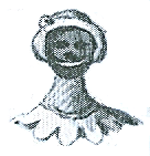
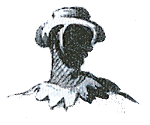
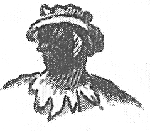
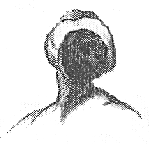
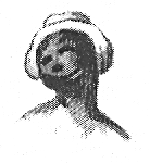
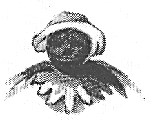
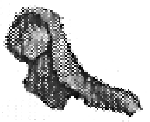
The primary head motions consist of:
| Face straight forward, |

|
| Face turned to the left, looking over left shoulder, |

|
| Face turned to the right, looking over right shoulder, |

|
| Leaning head down on left shoulder, |

|
| Leaning head down on right shoulder, |

|
| Stretching neck and head forward, no shoulder motions, |

|
| Hat, |

|
A further addition to Feuillet choreography that consists of a "half moon" symbol at the end of the arm, which represents the hand that takes off or puts on the hat. Examples of arm/hat motions include:
| Raising the arm as high as the head, |

|
| Lower arm to be in-line with shoulder, |

|
| Stretch arm forward, back, then forward: the Arlequin Salutation, |

|
| Raising arm, turning wrist to put on hat, |

|
| Turn arm around shoulder, |

|
All these motions are written showing musical measures and lines of liason. Thus if the choreography had to be extended in some other way (such as the "dactyologia" 2 of Hindu dance, or use of ankle bells with ankle motions in Hindue dance), new additions to Feuillet choreographic notation could easily be created.
© Copyright 2006 - 2018
The Esther M. Zimmer Lederberg Trust
 Website Terms of Use
Website Terms of Use